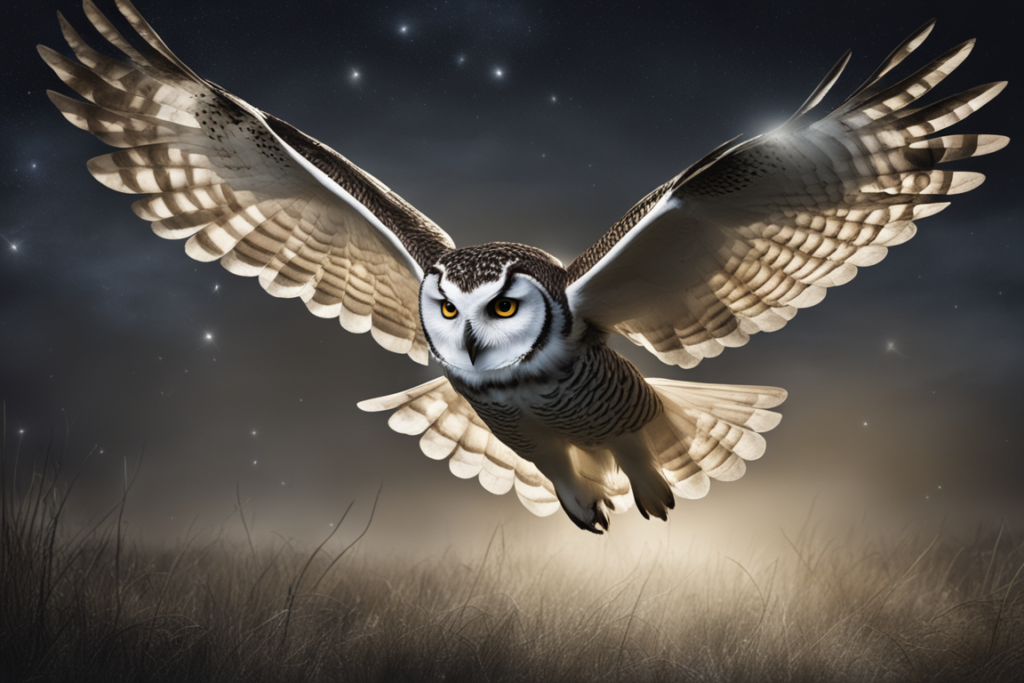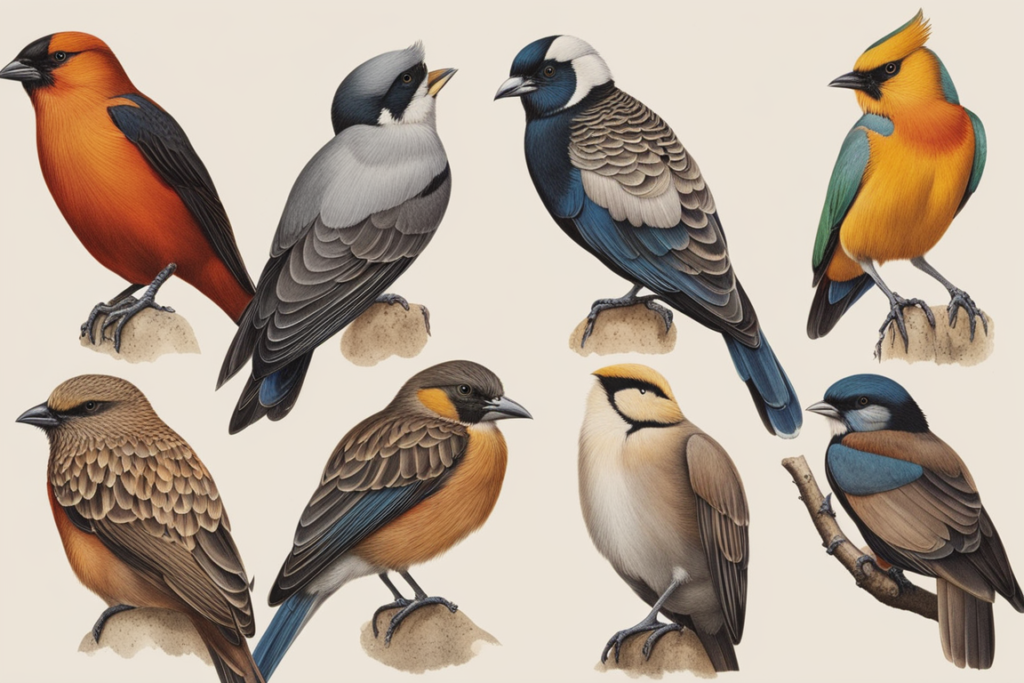Where Backyard Birds Go at Night?
Many backyard bird watchers are left wondering – where do those colorful feathered friends disappear or fly to at night? Most small songbirds, like Singing Starlings, retreat to nearby trees to roost. Larger birds like chickens roost in their coops or shelters provided. This guide explores the various locations birds seek refuge in as evening falls, from branches to nesting boxes to communal gathering spots. We’ll shine a light on avian nighttime behaviors to increase understanding of what happens after dark in backyards.
Key Takeaways:
- Birds exhibit diverse sleeping patterns, with some species retiring shortly after sunset and others, like owls, thriving in the darkness as nocturnal hunters.
- Preferred roosting spots for backyard birds include tree branches, nesting boxes, and communal roosts, where they seek safety, warmth, and social interaction.
- Survival strategies for cold nights involve behaviors like floating on water to conserve heat or fluffing up feathers to create insulating air pockets.
- Birds possess unique adaptations such as unihemispheric slow-wave sleep, allowing them to remain alert to potential threats while still getting the rest they need.
How Do Birds Sleep?

Most birds huddle together at night when they rest. This is beneficial to birds who need to get warm and to protect themselves from predators. Passerines or perches such as chicks and white-headed ducks are sleeping in positions where their feet are held in their perch. Its claws lock tightly to prevent fall. During sleep, birds puff up feathers and tuck their legs to the wings for protection and to keep warm. During their sleep, most birds are half-conscious and can relax while observing danger.
The Challenges of Getting a Good Night’s Sleep
Our birds seem to have genuinely enjoyed life, and no wonder we enjoy having them there too. However, in real life, the bird lives hard and sleeping is the dangerous part of the day. Birds who rest can be vulnerable to predation and cold when they get some rest and it needs sage planning. Different species use varying techniques to keep them quiet.
Getting Comfy for the Night
Most birds sleep on their own in the sun, the same place as us. It looks awful. These passerines are songbirds like thrush tits. Usually, finches like sleeping. It will fluff its feathers, put its legs close together, and place its head in its feathers on the backside. The head twisting is a breathing action by allowing air through the feathers and therefore losing more energy at night.
Many Birds, Many Sleeping Patterns
Birds exhibit a remarkable diversity in their sleeping patterns. Some species, like the iconic American robin, retire to their roosts shortly after sunset, while others, such as the melodious nightingale, are known for their nocturnal serenades. Additionally, certain birds, like blue jays and sparrows, may engage in brief periods of sleep throughout the night, interspersed with short bursts of activity.
Nocturnal Birds are the Masters of the Night

A nocturnal bird is one that is active at night, such as owls and nightjars. One good example is a Great Horned Owl that hunt mainly at night, preying on mice, rabbits, geese among others.
Nocturnal birds wake up as the sun sets and are specially adapted to thrive in the darkness. With keen night vision, acute hearing, and silent flight, these avian hunters are perfectly suited for capturing prey under the cover of night.
While diurnal birds rely primarily on visual cues to navigate their surroundings, nocturnal birds use a combination of sight and sound to locate food and avoid predators in the dark.
Why Tree Branches and Nesting Boxes are Birds’ Preferred Roosting Spots
When night falls, birds seek out sheltered places to rest and sleep. Tree branches, with their sturdy limbs and dense foliage, provide ideal roosting spots and nests for their eggs for many species. Birds may huddle together in groups, finding safety in numbers and sharing body heat to stay warm on cold nights.
Additionally, nesting boxes and tree holes offer cozy accommodations for cavity-nesting birds like chickadees and woodpeckers, protecting them from the elements and potential predators.
However, some birds like doves and pigeons build relatively flimsy nests, often using sticks and other debris. But these nests are strategically located in a safe place, away from possible predators.
Night time Roosts Means Gathering for Safety

In some cases, birds gather in large flocks at communal roosts to spend the night together. These nighttime gatherings serve multiple purposes, including protection from predators, sharing information about food sources, and maintaining social bonds within the flock. Common roosting sites include dense thickets, reed beds, and marshes, where birds can find shelter and safety amid darkness.
When the night roost begins to form, you’ll often see crows flying around and making noise. They typically gather in trees or on tall structures like power lines or buildings. As more birds arrive, they filter down through the branches until everyone has settled into their spot for the night.
Surviving Bitter Cold Nights, Adapting Strategies for Winter Survival
For birds living in colder climates, surviving bitter cold nights requires additional strategies to conserve body heat and maintain energy levels. Some birds even have higher metabolic rate than others which means they generate less body heat and lose heat more quickly, making them more susceptible to cold temperatures.
Some species, like water birds and ducks, tuck their heads under their wings and sleep floating on the surface of the water to minimize heat loss. Other birds, like finches and sparrows, fluff up their feathers to create insulating air pockets, trapping warmth close to their bodies.
Unihemispheric Slow Wave Sleep Allows Sleeping with One Eye Open
One of the most fascinating adaptations observed in birds is their ability to sleep with one half of their brain at a time—a phenomenon known as unihemispheric slow wave sleep. This unique sleeping behavior allows birds to remain alert to potential threats while still getting the rest they need. By keeping one eye open and one hemisphere of the brain awake or asleep, birds can quickly respond to danger without fully rousing from sleep.
Where Do Backyard Birds Go at Night? Exploring Avian Behavior
In conclusion, backyard birds demonstrate nighttime habits as diverse and complex as the creatures themselves. Whether they nestle in tree branches, snug in nesting boxes, or gather in communal roosts, birds have evolved a variety of strategies to survive and thrive in the cover of darkness.
So, the next time you hear the soft rustle of feathers or the gentle cooing of doves outside your window, take a moment to marvel at the wonders of avian sleep and the remarkable adaptations that enable birds to navigate the night sky with ease.
Read also: What is the Best Time to Bird Watch in the Backyard?




